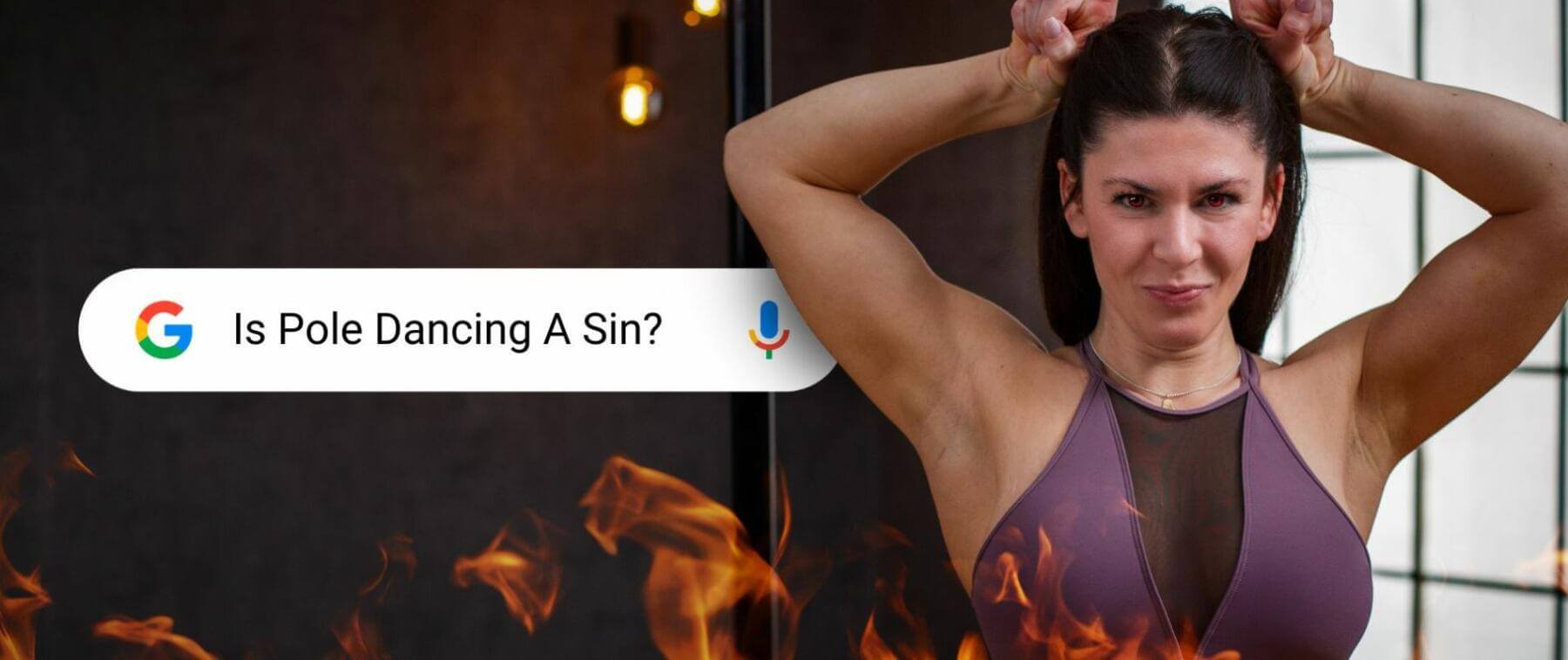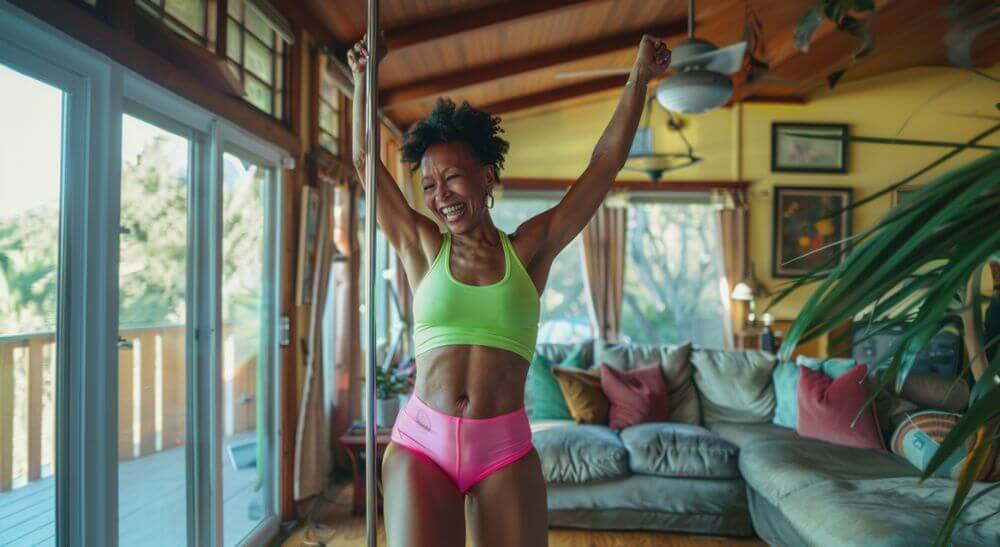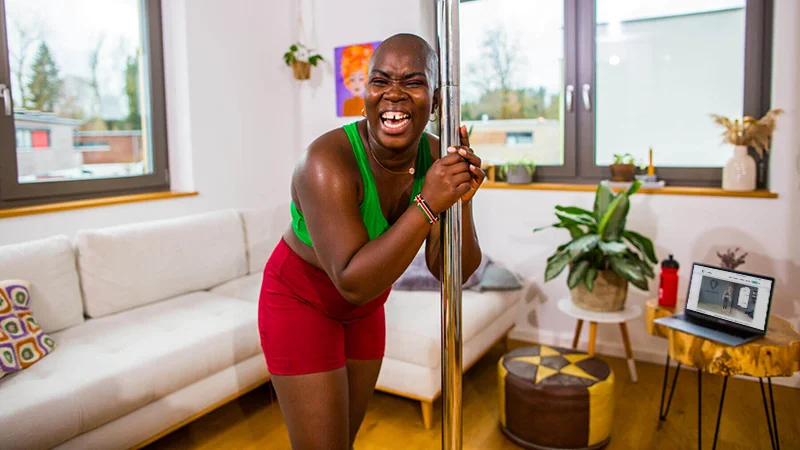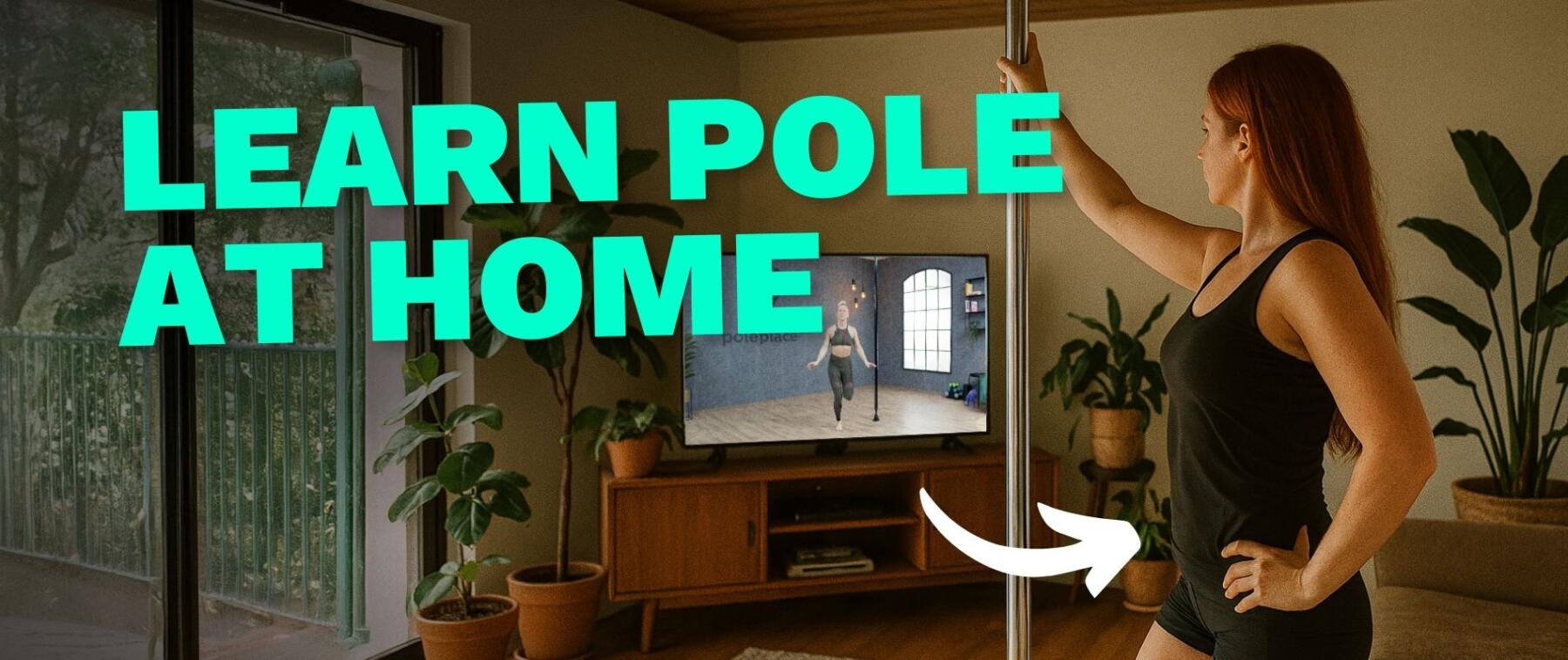From what to wear to how pole dancing feels – let’s set the record straight.
Let’s unravel the mysteries surrounding this empowering form of dance and fitness. From dispelling myths about its perceived sinfulness to exploring its inclusivity for individuals of all ages, body types, and genders, we aim to enlighten and inspire you with valuable insights and guidance. So, whether you’re a newcomer seeking to dip your toes into the world of pole dancing or a seasoned enthusiast looking to enhance your skills, join us as we delve into the diverse facets of this incredible sport.
Pole Dancing: Your Burning Questions Answered
1. Does Pole Dancing hurt?
As with any physical discipline, starting pole dancing can come with its share of discomfort. Beginners may experience ‘pole kisses’—bruises and muscle soreness that result from learning new moves and building strength. These minor aches are natural and show that your body is adapting to the demands of pole dancing.
Over time, as your technique improves and your body becomes more accustomed to the movements, these signs of exertion tend to decrease. It’s important to listen to your body and rest as needed to prevent injury. Safety should always come first. If you experience more than mild discomfort, it’s crucial to pause and assess your form or consult with an instructor to ensure you’re practicing correctly. With proper guidance and persistence, the discomfort diminishes, making way for more fluid and pain-free performances.
2. What should I wear for Pole Dancing?
Choosing the right attire for pole dancing is key to both your comfort and performance. It’s essential to wear clothing that allows for plenty of skin-to-pole contact to maintain a good grip. Typical pole attire includes shorts and a sports bra or tank top. The snug fit ensures that the fabric doesn’t get in the way of your movements or poses.
Remember, pole dancing is an inclusive activity, so wear what makes you feel comfortable and confident. Clothing that celebrates your body, whatever its shape or size, is always the best choice. For those feeling a bit self-conscious at the start, practicing at home allows you to find an outfit that feels right for you without the pressure of an audience. As you grow in confidence, you’ll likely find that what you wear becomes a personal statement of your pole dancing journey.
3. Why Is Pole Dancing So Expensive?
The cost of pole dancing might seem steep at first glance, but it’s important to consider what you’re paying for. Quality instruction in a safe environment is invaluable. Moreover, studios invest in high-end equipment that ensures the best experience and safety for their clients.
When you sign up for classes, you’re not just paying for the physical space; you’re also gaining access to a community and the expertise of seasoned instructors. This can accelerate your learning and enhance your passion for pole dancing. For those concerned about the expense, there are alternatives such as online platforms that offer comprehensive video tutorials at a fraction of the cost. These resources can be a great way to learn at your own pace and within your budget, ensuring that the joy and benefits of pole dancing are accessible to everyone.
4. Can Anyone Learn Pole Dancing?
Pole dancing is an art form that is accessible to anyone interested in learning. It does not discriminate against age, body type, gender, or fitness level. Everyone starts with the basics, and from there, progression depends on individual practice and dedication.
For those hesitant about their ability to participate, rest assured that the pole community is incredibly welcoming and supportive. Online platforms like POLEPLACE offer beginner-friendly classes that can be done in the privacy of your own home, promoting body positivity and personal growth. In-person studios also cater to beginners, providing a space to learn and connect with others. The key is to find an environment where you feel comfortable and motivated. With the right mindset and resources, anyone can embark on a pole dancing journey and reap its many physical and emotional benefits.
5. How to Pole Dance at Home?
To start pole dancing at home, the first step is to create a safe space with a high-quality pole installed according to manufacturer instructions. Once your pole is set up, the focus shifts to finding reliable instruction. Online platforms are invaluable for home learners, offering a breadth of tutorials that cover everything from basic grips to advanced aerial tricks.
When learning at home, it’s crucial to include comprehensive warm-up and cool-down routines to prevent injuries. These practices prepare your body for the workout ahead and aid in recovery afterward. Additionally, ensure you have enough space to perform moves safely and don’t rush into complex techniques without mastering the basics. With resources like POLEPLACE, you can access structured lessons that build your skills progressively, ensuring a fun and effective pole dancing experience in the comfort of your own home.
6. Is Pole Dancing Dangerous?
Pole dancing, like any physical activity, carries a risk of injury if not practiced correctly. However, when approached with the proper technique, safety measures, and equipment, it is as safe as any other form of dance or fitness. It’s essential to learn from qualified instructors who can guide you through the correct form and execution of moves.
Students should also be mindful of their own limits and not attempt advanced moves before they are ready. A good foundation in the basics will prepare your body and reduce the risk of falls or strains. Additionally, ensuring the pole and surrounding area are secure and free of hazards is crucial for practicing safely at home. With these precautions in place, pole dancing is an enriching and low-risk activity that strengthens the body and uplifts the spirit.
7. Where Can I Learn Pole Dance?
There are multiple avenues available for learning pole dance, catering to different preferences and lifestyles. If you enjoy a structured environment and personal interaction, local pole fitness studios offer classes led by experienced instructors. These studios provide an opportunity to receive direct feedback and be part of a community.
For those who prefer the flexibility of learning at their own pace or may not have access to a local studio, online platforms like POLEPLACE provide a wealth of resources. With a range of videos covering various skill levels, online learning can be a convenient and comprehensive way to improve your technique. Additionally, online communities offer support and encouragement, allowing you to connect with fellow pole enthusiasts from around the globe. Whether you choose in-person classes, online tutorials, or a combination of both, there’s a learning path that fits your needs.
8. Why is Pole Dancing sexualized?
Pole dancing is often sexualized due to its history in nightclubs, where it was typically associated with adult entertainment. However, this perception overlooks its evolution into a recognized form of exercise and artistic expression. The athleticism and skill involved in pole dancing are comparable to those required in forms of aerial gymnastics and contemporary dance, yet it is often not regarded with the same respect due to its past connotations.
Today, pole dancing is practiced by a diverse community focused on fitness, self-expression, and empowerment. With pole fitness studios popping up globally and the inclusion of pole in mainstream fitness regimes, its image is shifting. Advocates work tirelessly to highlight the sport’s technical and creative aspects, aiming to dissociate it from its sexualized stereotype and to promote its legitimacy as a sport and art form.
9. Why don’t Pole Dancers get dizzy?
Professional pole dancers spend numerous hours practicing their routines, and with time, their bodies adapt to the constant rotation. The process is similar to how professional ballet dancers adapt to spinning in pirouettes. This is often referred to as “spotting,” which involves focusing on one spot during each rotation to maintain orientation and balance.
In addition, the body has a natural mechanism to counteract dizziness. Inside our ears, there’s a labyrinth system filled with fluid that informs our brain about our body’s rotation. When we spin repeatedly, the fluid continues to move even after we’ve stopped, making us feel like we’re still spinning. With consistent practice, pole dancers can train their bodies to ignore this signal, reducing the sensation of dizziness after spinning.
However, it’s important to note that everyone’s bodies react differently, and it may take some people longer than others to get accustomed to the spinning. Beginners might initially experience dizziness, but with patience, persistence, and proper technique, the sensation often decreases over time.
10. How can I explain Pole Dancing to my Grandmother?
When it comes to sharing your passion for pole dancing with someone who may have preconceived notions, like a family member or friend, it’s helpful to focus on the sport’s artistic and athletic aspects. You could describe pole dancing as a form of vertical gymnastics that combines dance, strength, and acrobatics. Emphasizing the physical benefits, such as improved strength, flexibility, and endurance, can also help others understand its value as a fitness discipline.
Sharing personal stories of how pole dancing has positively impacted your confidence and well-being can be powerful. If possible, show videos or photos of your routines that highlight the skill and grace involved. By discussing your hobby openly and with pride, you play a part in breaking down taboos and might even inspire others to explore the world of pole dancing for themselves.
11. Is there an Age Limit for Starting Pole Dancing?
One of the most liberating aspects of pole dancing is that there’s no age limit to start. This inclusive activity welcomes individuals who are in their teens to those well into their golden years. The adaptability of pole dancing means that routines and movements can be tailored to suit varying levels of fitness and mobility, making it accessible to a broad audience.
Older beginners might find pole dancing particularly beneficial as it can help maintain muscle strength, flexibility, and balance, which are crucial for overall health. Moreover, the community aspect of pole dancing can be a source of social interaction and support, which is important at any age. Age should never be a barrier to trying something new, and pole dancing exemplifies this by offering a unique way to stay active and engaged with life.
Final Thoughts: Pole Dancing as a Passion
Pole dancing is more than a fitness regimen or dance form; for many, it’s a profound passion that transcends physical boundaries and taps into deep wells of creativity and self-expression. It’s a journey marked by personal growth, physical achievements, and the joy of moving to the rhythm of one’s own drum.
Whether you are drawn to the sport for its artistic side, the supportive community, or the thrill of mastering new moves, pole dancing offers a unique outlet for your energy and emotions. As you progress and challenges turn into triumphs, your passion for pole dancing is likely to grow, fueling your dedication and love for the sport. Embrace the journey, celebrate every milestone, and remember that in the world of pole dancing, every spin, climb, and inversion tells the story of someone’s passion brought to life.
This content is for informational and educational purposes only and does not constitute individualized advice. It is not intended to replace professional medical evaluation, diagnosis, or treatment. Seek the advice of your physician for questions you may have regarding your health or a medical condition. If you are having a medical emergency, call your physician or 911 immediately.
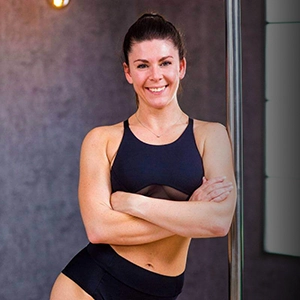
About Carmen 💕
Carmen discovered her love for pole dancing over 10 years ago — back when she was a student in a local studio. What started as a fun class turned into a full-blown passion and years of experience as a pole trainer.
Now she’s one of the proud co-founders of POLEPLACE — sharing her love for pole with a growing community of amazing humans around the world.
Share this article 💖
WHAT OTHERS LOVE
Pole Dance Classes You Can Join from Home
“I didn’t feel welcome in a studio…” That’s something we hear far too often. Not just once or twice [...]
Pole Dance Classes for Beginners at Home
Why Pole Dance Classes Are So Much More Than Just Fitness Joining pole dance classes at home isn’t just about [...]
Daniel Rosen – the biggest voice in pole dancing
Daniel Rosen, better known as danrosenpole on Instagram, is a superstar in the pole dancing world. With over 100k [...]


